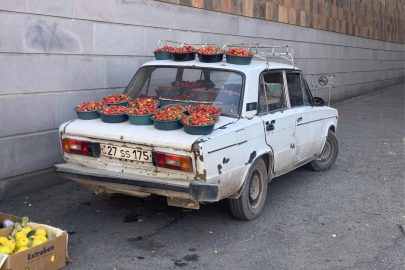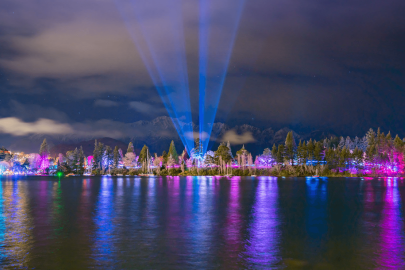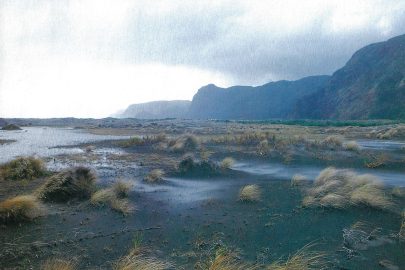Jan 16, 2024 Travel
In the first six months of 2023 roughly 18,000 people moved to Canterbury. Most from overseas, but many from elsewhere around the country. They came to make a home.
A sense of home comes naturally here. There’s cheaper housing, abundant food, nature of every variety, and – most important for a newly-thriving metropolis – entertainment. Multiple massive music festivals come here; the city hosts huge booze and food events; tiny boutique cinemas like Alice in Videoland and Lumière and grungy, intimate gig spaces will delight music and film buffs; and the city is dedicated to celebrating street art on a globally-impressive scale
For the visual among us, the Arts Centre is the best place to start finding your footing. The oldest part of the city is also its artistic hub; the Arts Centre is a category one heritage building. The precinct is home to Ernest Rutherford’s study, Absolution Tattoo, and wandering jazz musicians.
There are multiple exceptional art galleries within a short walk of each other. In today’s whistle-word tour are just three of them, but a real painthead could nosy around this arts precinct all weekend.
For someone wanting to take in all the sights and sounds of Christchurch’s galleries, you couldn’t place yourself better than the Observatory Hotel; it’s inside the Arts Centre and completely leans into this, using bold colours and exquisite craftsmanship to make what could be a normal hotel room a lush and visually stimulating experience.
Between all the hidden gems in this zone are some that stand proud; the most obvious is Ravenscar House. It’s easy to spot. You can see the gleam off its smooth concrete walls – cast from the rubble of Susan and Jim Wakefield’s home, plus other buildings demolished in the 2010/2011 earthquakes – from the Botanic Gardens.
The Wakefields built this place to house the extremely eclectic – and expensive – art they collected over their lives, and also to commemorate the home they lost in the earthquakes.
It’s built to mimic the layout of a home: dining room, bedroom, living room, library. Of course, you cannot use any of the furniture and obviously most of us don’t have a library, but the layout and art contained in each rooms gives us more than just an eyeful of pretty solid gems (Colin McCahon, Frances Hodgkins, an ancient Roman wine strainer); it also gives us a peek into the life of Susan, who had a fascination with classical knick knacks and glass sculptures, and who was awarded a Queen’s Service Order for public services and a Suffrage Centennial Medal for contributions to women’s issues.
It tells us slightly less about the life of Jim, who became a Member of the NZ Order of Merit for his services to harness racing. One takeaway from Ravenscar is we must be grateful Jim and Susan met, because otherwise he might have spent all his money on ponies.
A short, sunny walk past coffee cars and dumpling vans takes us from Ravenscar to Christchurch Art Gallery Te Puna o Waiwhetu: a local hotspot. It hosts drag nights and local musicians and, of course, one of the best gift shops in the country. But it is also a really good art gallery.
On the bottom level there always seems to be a major new work. Spring Break is the current theme; a change of seasons meets a change of heart. We’re met with a large oils and acrylics series by local artist Priscilla Rose Howe inspired by the femme in horror films. Deeper into the exhibit is a sculpture of milk crates and poolside umbrellas fashioned into a fale; Paradise by Jimmy Ma’ia’i. There must be hundreds of artists displayed here, but it never feels crowded or unnavigable.
On the top level more established artists display for longer. There are plenty of Charles Goldies and Rita Anguses and Fiona Clarks, alongside more contemporary artists like Saskia Leek, Laura Duffy, and Ana Iti – the latter of whom has a work in the gallery (Treasures left by Our Ancestors) critiquing Canterbury Museum’s controversial dioramas of early NZ Māori. We love to see the institutions do a little self-reflection.
The respect afforded to New Zealand artists in this gallery is particularly notable when we consider the bridge, which pointedly disrespects one. The bridge is the best part of the gallery. It meanders and curves between the rooms, and has a bold red line drawn straight down it showing the shortest path to walk. At the end of the walk, a plainly-worded sign meets you.
“Billy Apple has proposed that Christchurch Art Gallery Te Puna o Waiwhetu straighten its curved bridge to allow a more direct path,” it reads. It goes on to explain Apple’s reasoning, while making it clear the gallery will be doing no such thing.
Around the corner from the art gallery is the Centre of Contemporary Art Toi Moroki (COCA). It’s currently home to Tangata Whenua, a solo exhibit by the award-winning Robyn Kahukiwa. It’s her first solo show in Te Wai Pounamu in 20 years, and it presents new works along her ongoing themes of mana motuhake, mana wāhine, and mana whenua.
The top floor is currently playing host to a Canterbury Museum exhibit – the museum is on a five-year shutdown as it’s been gutted for a massive revamp. The dinosaurs and megafauna that once lived in the museum are pared down to a few essentials, displayed at COCA in an exhibition of extinction: the cretaceous, the denovian, the anthropocene.
The contemporary art spin becomes apparent when you notice the hefty piece of pounamu placed at the front of the room.
“This pounamu boulder from the Arahura river in Te Tai o Poutini carries the mauri of Canterbury Museum while we occupy this space,” reads the display. A nod to the museum, but also a nod, perhaps unwittingly, to Canterbury musician Marlon Williams. In his song Arahura, he sings about the millennia stones oversee. While we go through the sixth mass extinction, the pounamu seems to say, beauty will persist in the Arahura river.
Art is free to evolve here in Christchurch, unshackled from the artistic extinctions demanded by the revolving coolness of Karangahape Road, or by Billy Apple’s critiques. You can be old school, new school, or a T-rex standing behind a piece of pounamu. There are enough homes for all.






